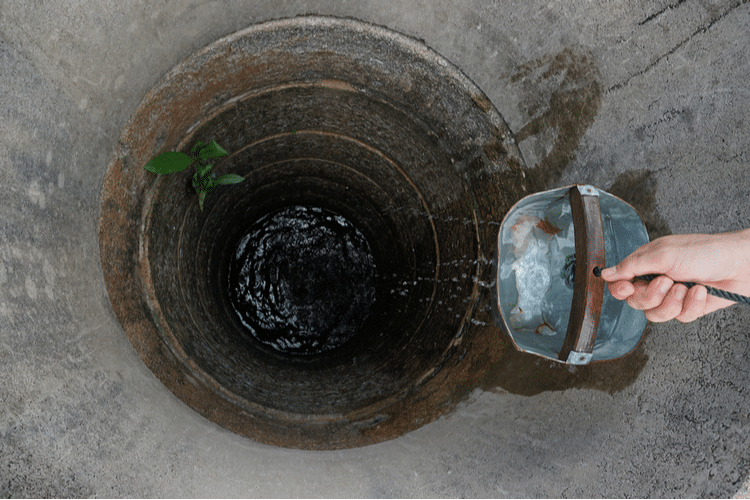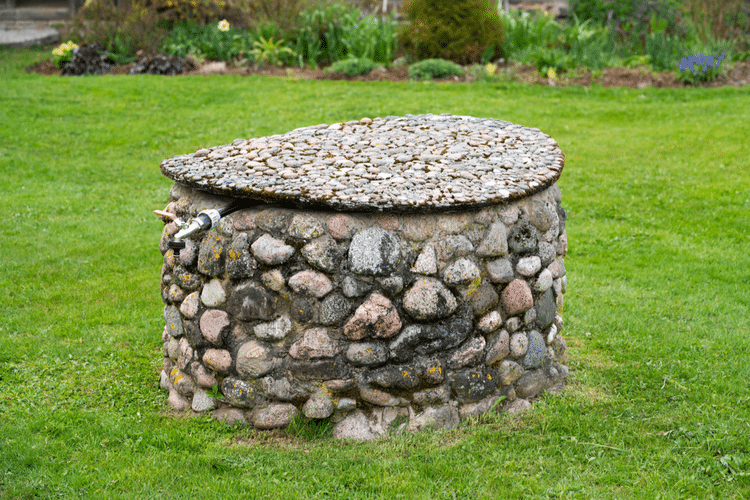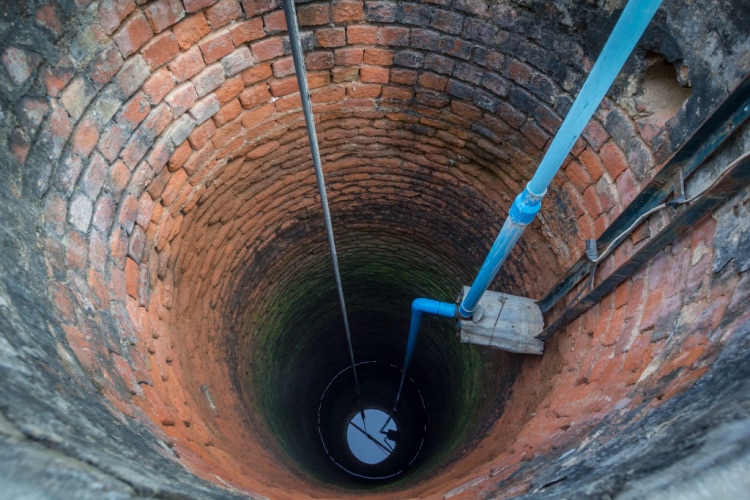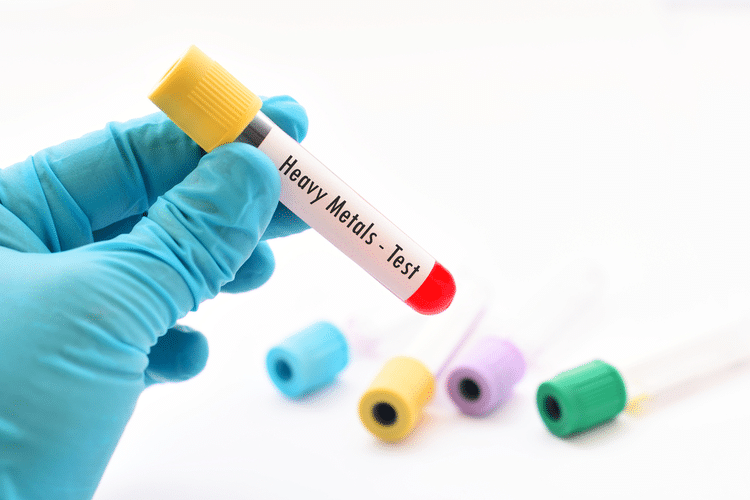Wells are the primary source of water for most households in rural areas. Since the owners are responsible for maintaining private wells, knowing how to preserve them is essential to ensure clean, drinkable water.
In this article, we will talk about different types of wells, discuss the advantages and disadvantages of well water, and the most common well water contaminants you will likely encounter.
Where Does Well Water Come From?
Well water is natural water drawn from underground. It is mostly rainwater that made its way into earth. The water is accessed by digging or drilling a hole in the ground to reach the groundwaters. A pump and other well water system components are then used to draw water from underground up to the surface.

The History of Wells
Water wells date back thousands of years and were first made by hand. Builders would dig into the earth, then line the new well with stones.
The oldest existing well is located in Israel, constructed between 8100 – 7500 BC. However, India, China, and Europe also had hand-dug wells built with stones and logs.
Wells were mostly hand-dug up until the 19th century. However, machine drilling became possible by the turn of the 19th century, making it easier and faster to dig wells.
At the beginning of the 20th century, the roller drill bit was invented by Howard Hughes Sr., which paved the way for the advancement of drilling technology from the 20th century to what we know today.
Throughout history, wells were the main water source for people who lived away from springs and rivers. Nowadays, they’re the main water source for those who don’t have access to municipal water systems.
The Different Types of Water Wells
There are three types of water wells: drilled wells, dug wells, and driven wells.
1. Drilled Wells
Drilled wells are created by a rotary drilling machine. They are the deepest type of wells, measuring thousands of feet in depth.
Since they’re far from the surface, they’re less likely to be polluted. Drilled wells are only 4 – 5 inches in diameter and generally have a solid metal casing.
2. Dug Wells
Dug wells are made from holes dug in the ground with a backhoe or shovel. They are upheld with a tile, stone, or brick lining.
They’re usually 30 or 50 feet deep and have a much bigger diameter than drilled wells. They can be contaminated more easily as well.
3. Driven Wells
A driven well is typically between 30 and 50 feet in depth. It is made by driving a pipe into the dirt until it reaches an aquifer (a geological formation that stores underground water). However, since they are quite shallow, they are prone to contamination.
The Advantages & Disadvantages of Well Water
A well system is a must if you live in an area where city water is not accessible. It’s also preferable if you want to have complete control over your water system.
However, there are certain disadvantages to maintaining your own water source:
- Wells last 20 years
- Well systems are cost-effective
- They are the best way to get water in dry areas and regions
- Scale buildup
- Potential bad taste in drinking water
- It requires frequent maintenance
- You risk the consumption of various bacteria and microorganisms
Well water has a higher chance of contamination than tap water due to surface run-offs and proximity to natural mineral deposits. Moreover, since wells are more prone to contamination than city water, you might experience bad tasting water and bacterial buildup in the well.
Well water is also typically hard due to the presence of calcium and magnesium hard water minerals which causes limescale buildup, affect the lifespan of appliances and clothes and lead to corrosion in the piping system and water tanks.
You can learn more about the advantages of well water over city water from our well water vs. city water comparison article.
What Does a Well Look Like?
Modern water wells are constructed underground, so you only see the uppermost part which resembles a short and thick pipe. This part consists of a lid or cap to provide access to the water and a small part of the well casing that sticks out of the ground.

However, beneath are the rest parts of the system. An illustration of a well water system shows a very tall system that runs vertically and consists of several parts.
A well screen sits at the bottom of the system, preventing the rubble in the aquifer from moving into the casing. A submersible pump is placed inside the casing to draw water from the bottom and carry it to the top, and a pitless adapter ensures that the water finds its way to the pressure tank at your home.

The Main Components of Private Wells
Wells are made by identifying a feasible water source underground and drilling into that source. After the source is accessed and deemed safe, a casing that connects the water source to the surface is placed, and a pump is connected to the casing to draw water.
Casing
No matter how and when it’s built, a well should absolutely have a casing. It surrounds the inside of the well and allows the underground water to come up without getting contaminated. Well casings are mostly made of steel or PVC.
Steel casings are more prone to rusting and corrosion due to mineral concentration in the water, so they might affect the water quality after a while. PVC casings are resistant to rust and corrosion, but since they’re made of plastic, your water will be contaminated with microplastics over time.
Pump
The pump sucks water from the source and carries it to the storage tank in your home.
Submersible pumps are the most popular and effective mechanism for drawing water from underground. They can work in any depth thanks to a powerful motor. However, since they’re made of metal, they’re prone to corrosion and rust, requiring higher maintenance than others.
Jet pumps, on the other hand, are mounted above the casing and draw water with the help of a suction pipe. However, their strength and efficiency dramatically decrease as the depth of the well increases.
Centrifugal pumps are also suited to shallow wells no deeper than 25 feet. They are low-maintenance, but smaller ones suited to household use don’t perform at peak efficiency.
Lastly, some still prefer using hand pumps manually operated from the ground by a lever, but they aren’t very efficient if you want to provide water for an entire household.
Additional components
Wells also have several other parts that help to keep it functioning correctly. These parts act as protection and help with filtration.
Pressure grout is applied to the outside of well casing to help keep out foreign substances that could taint the water.
At the very bottom of the casing are well screens that filter the rubble.
The Most Common Well Water Contaminants
According to the EPA (Environmental Protection Agency), there are six common categories of contaminants that can pollute well water: organic chemicals, fluoride, heavy metals, microorganisms, radionuclides, and nitrates. These contaminants can also cause changes in the color and taste of water.
Surface run-offs and improper waste disposal can cause these contaminants to enter the groundwaters near your well. When soil can’t absorb rainwater, the excess water flows around the surface until it can be absorbed, transporting these contaminants to areas near your well.
Private wells aren’t monitored by health and environment authorities, which means that well owners are responsible for treating their water. Otherwise, you run the risk of consuming contaminated water.
Organic Chemicals
Organic chemicals are present in many household products, pharmaceuticals, paints, disinfectants, and industrial waste. These chemicals can infiltrate your well through waste disposal and surface run-off, especially following heavy rainfall.
Fluoride
Fluoride is a natural element known to help the teeth and can be found in food, dental products, and certain industrial operations. Generally, fluoride is safe to consume but only at moderate levels.
If the levels exceed 4.0mg/L in drinking water, it can lead to serious health concerns like skeletal and dental fluorosis. In moderate cases, it affects the bones by causing pain and stiff joints. If the disease is severe, it can cause calcification in the ligaments and impairs muscles.No need to worry, though, as excess fluoride in water can be removed by using fluoride filtration systems such as fluoride pitchers.

Heavy Metals
Heavy metals find their way to your water when the plumbing lines corrode or if the home’s well systems are outdated. Moreover, waste disposals that have gone wrong or the proximity of the groundwater to natural mineral deposits can also lead to metal contamination.
Excessive exposure can cause damage to the intestines, kidneys, and liver, depending on the type of metal. Even more seriously, the consumption of metals like chromium, copper, arsenic, and lead might lead to different types of cancers.

Microorganisms
Microbiological forms like parasites, viruses, and bacteria can be found anywhere on Earth. They can sneak into private wells through surface run-off or structural damage in the well.
They can lead to a plethora of health issues. Especially the consumption of parasites like cryptosporidium and bacteria like giardia is known to cause issues such as diarrhea and stomach cramps. Organisms like E coli cause diarrhea, nausea, and headaches and can be dangerous for kids and immunocompromised people.
Radionuclides
Organic radionuclides are already present in our bodies and certain foods (did you know that bananas are slightly radioactive?), but only in minimal amounts.
However, radionuclides waste from nuclear power plants is extremely toxic. They can seep into the ground and contaminate groundwater, leading to cancer and other serious health conditions.
Nitrates
Nitrates are compounds found in fertilizers, industrial, animal, and human waste, and sewage. Consuming water that has a nitrate level of more than 10 mg/L can lead to severe illness.
If the water contains excessive levels of nitrate, you can develop methemoglobinemia. This condition is also known as baby blue disease, and it slows down the blood’s capacity to carry oxygen.
The elderly, pregnant women, and developing babies are vulnerable to nitrate overdose. In addition, those who have weak immune systems and are battling chronic blood, heart, or lung conditions shouldn’t be exposed to excessive amounts.
Heavy metals in excess can cause damage to the intestines, kidneys, and the liver. Exposure occurs when plumbing lines corrode or if the home’s well systems are outdated.
These metals include chromium, copper, arsenic, lead, and more.
Is it Okay to Drink Water From Wells?
Well water needs to be treated and tested consistently to avoid potential contaminants and pollutants. If it’s of good quality, you can use it for bathing, cooking, and of course, drinking.
That said, high levels of minerals can affect how the water looks, tastes, and smells. Iron in water, for instance, can cause your well water to turn yellow or brown. Similarly, hydrogen sulfide or sulfur can cause a wretched rotten egg odor.
How to Maintain a Well
Maintaining a well requires keeping it safe against any surface run-off and structural damages that could lead to contamination. In addition, you need to have your well and well water annually checked and tested by local health departments or certified labs.
These checks and tests cover almost every aspect, from mechanical issues to bacterial presence and to any kind of contamination possible.
Furthermore, you should keep material that might contain chemicals, like paint, pesticides, and fertilizers, as far away from the water source as possible. If there’s a septic tank in your house, make sure that its pipelines are not close to the well by contacting a professional plumber.
Ensure that the well cap is in good condition and doesn’t suffer significant damage. Otherwise, many contaminants can have an easy route to your water source.
Lastly, make sure that no component is rusty, and when you see signs of rust, address the problem by replacing the faulty parts immediately.
Also, remember that the serviceable lifespan of a water well is 20 years, and you’ll need to decommission it by contacting a professional contractor afterward.
Good topic, thank you for sharing this. Can’t wait to read more of your posts.
It’s great that you talked about how drilled wells are the deepest type of wells, measuring thousands of feet in depth. I think having a well on our property is going to be very useful, however, we cannot dig and install one on our own. So with that in mind, we should probably ask for a water well drilling installation service.
It’s good to know that drilled wells are less likely to be polluted. My husband and I decided that it would be a good idea for us to get a water well on our property in the summer, so I wanted to know some research on what type would be best to choose. I appreciate you helping me learn more about the different types of water wells to choose from!